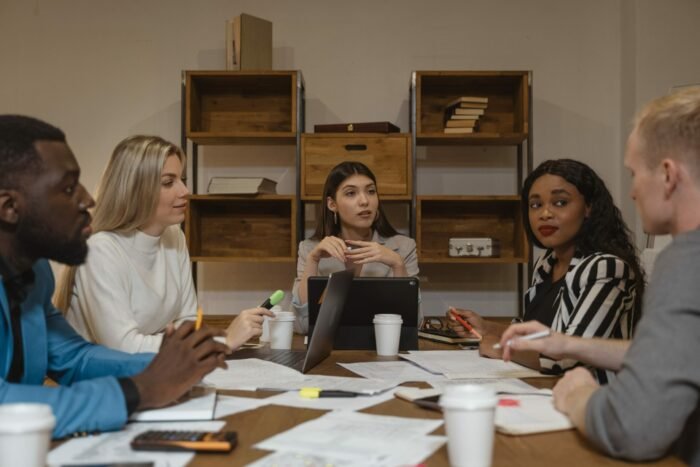Disability inclusion goes beyond mere accessibility. It’s about creating environments where everyone, regardless of their abilities, feels valued, empowered, and fully integrated into all aspects of life. In this article, we will explore the critical facets of disability inclusion and how organizations and society at large can go beyond just making physical spaces accessible.
Key Takeaways
- Inclusion goes beyond accessibility, focusing on empowerment and full integration.
- Disability is a spectrum of physical, sensory, cognitive, and developmental abilities.
- Universal design ensures usability for all without specialized adaptation.
- Legal obligations, like the ADA, mandate accessibility to prevent discrimination.
- Inclusive employment promotes diverse teams and innovation.
- Mental health considerations are integral to inclusive environments.
- Education and advocacy challenge stereotypes and empower self-advocacy.
- Technology plays a pivotal role, from digital accessibility to assistive devices.
- Achieving disability inclusion is a shared global responsibility.
- Inclusion is an ongoing journey requiring adaptation and feedback.
- Fostering an inclusive mindset is the cornerstone of true inclusion.
- Celebrating progress and recognizing role models are vital.
- Personal stories and storytelling challenge stereotypes and inspire.
- Government legislation and advocacy are crucial for progress.
- International collaboration transcends borders in the pursuit of inclusion.
- Personal empowerment and support networks foster participation.
- Achieving disability inclusion is a commitment to equal opportunities.
- Inclusion is an evolving process that requires continuous improvement.
- The ultimate goal is to build a world where every individual is valued, empowered, and fully integrated into society.
Understanding Disability
Defining Disability
Disability encompasses a wide range of physical, sensory, cognitive, and developmental impairments. It’s not a one-size-fits-all term but a spectrum of abilities and challenges.
Challenging Stereotypes
Breaking down stereotypes and misconceptions about disability is the first step toward inclusion. People with disabilities have unique talents, skills, and perspectives to offer.
The Accessibility Imperative
Physical Accessibility
Physical spaces, transportation, and digital environments should be designed to accommodate people with disabilities. Ramps, elevators, and accessible websites are key components.
Legal Obligations
Many countries have laws like the Americans with Disabilities Act (ADA) that mandate accessibility in public spaces and workplaces. Understanding and complying with these laws is crucial.
Assistive Technology
The advancement of assistive technology has opened up new possibilities for people with disabilities, from screen readers to mobility devices.
Beyond Physical Accessibility
Inclusive Employment
Ensuring that the workplace is inclusive involves hiring, training, and providing opportunities for people with disabilities. Diverse teams lead to diverse ideas.
Accommodations
Accommodations, such as flexible work hours or sign language interpreters, should be readily available to empower employees with disabilities to perform at their best.
Mental Health and Well-being
Mental health is just as important as physical health. Creating a supportive and stigma-free environment for employees with mental health challenges is vital.
Education and Awareness
Disability Sensitivity Training
Educating employees and the general public about disability sensitivity can help dispel myths and foster understanding.
Representation Matters
Having diverse role models and representation in media, literature, and leadership positions helps challenge stereotypes and promotes inclusion.
The Role of Technology
Digital Inclusion
Websites, apps, and online content must be designed with accessibility in mind, ensuring that everyone can access information and services.
Artificial Intelligence
AI can assist people with disabilities in numerous ways, from speech recognition to navigation aids.
The Future of Accessibility
Innovations like smart cities and wearable technology hold the promise of even greater accessibility and inclusion.
Collaboration and Advocacy
Partnerships with Disability Organizations
Working with disability organizations can provide valuable insights and resources to promote inclusion.
Advocacy and Policy Change
Advocating for policies that support people with disabilities on local, national, and global levels is essential for progress.
Celebrating Achievements
Success Stories
Highlighting the achievements and contributions of people with disabilities in various fields serves as inspiration and proof of what’s possible.
International Day of Persons with Disabilities
December 3rd is recognized globally as a day to promote the rights and well-being of people with disabilities. It’s an opportunity to celebrate achievements and raise awareness.
The Ongoing Journey
Continuous Improvement
Disability inclusion is not a one-time effort. It’s an ongoing journey that requires continuous improvement, feedback, and adaptation.
The Benefits of Inclusion
Embracing disability inclusion enriches organizations and communities. It leads to innovation, better problem-solving, and a more equitable society.
Disability inclusion is a multifaceted endeavor. It begins with understanding, moves through physical and digital accessibility, encompasses employment and education, and requires collaboration and advocacy. It’s not just a matter of compliance with laws; it’s about fostering a more inclusive, innovative, and equitable world where everyone’s unique abilities are celebrated.
This comprehensive article delves into the different aspects of disability inclusion, from understanding the spectrum of disabilities to the ongoing journey toward a more inclusive world. It emphasizes the importance of going beyond mere accessibility to create a society that values and empowers individuals with disabilities.
Building a More Inclusive Society
Community Inclusion
Inclusive communities are those where people with disabilities can fully participate in social, recreational, and cultural activities. These communities promote a sense of belonging and connection.
Accessible Transportation
Public transportation should be designed to accommodate individuals with disabilities, ensuring they have the freedom to move independently.
Accessible Public Spaces
Parks, public buildings, and recreational facilities should be designed with accessibility in mind, enabling everyone to enjoy public spaces equally.
The Power of Universal Design
Universal Design Principles
Universal design involves creating products, environments, and communication that are usable by all people, to the greatest extent possible, without the need for adaptation or specialized design.
Beyond Disabilities
Universal design benefits not only people with disabilities but also the aging population and anyone who might face temporary impairments.
Promoting Independent Living
Accessible Housing
Accessible housing features like wider doorways, lower counters, and ramps enable people with disabilities to live independently.
Assistive Devices
Innovations in assistive devices, from smart home technology to voice-activated appliances, empower individuals to live on their terms.
Access to Healthcare
Healthcare Accessibility
Healthcare providers should ensure that their facilities and services are accessible to individuals with disabilities. This includes accessible examination tables and sign language interpreters.
Inclusive Medical Training
Medical professionals should receive training on how to provide care that is sensitive to the needs of individuals with disabilities.
Nurturing Young Advocates
Education for Inclusion
Inclusive education means creating classrooms where all students feel welcome and valued, regardless of their abilities.
Empowering Youth
Empowering young people with disabilities to advocate for themselves and their peers is a crucial step toward promoting inclusion.
The Economic Advantages
Diverse Workforces
Companies that embrace disability inclusion tend to have more diverse workforces, which often leads to greater innovation and better problem-solving.
Accessible Markets
Businesses that prioritize accessibility tap into an underserved market, as people with disabilities and their families represent a substantial consumer base.
Measuring Progress
Accessibility Metrics
Measuring progress toward disability inclusion often involves tracking metrics related to accessibility, such as the number of accessible facilities and websites.
Employee Satisfaction
Monitoring employee satisfaction, particularly among those with disabilities, can gauge the success of inclusion efforts.
Overcoming Stigma
Challenging Stereotypes
Media, advertising, and popular culture play a significant role in challenging stereotypes and showcasing people with disabilities in a positive light.
The Power of Storytelling
Personal stories of triumph and resilience can help break down barriers and show what individuals with disabilities can achieve.
Leading by Example
Inclusive Leadership
Promoting leaders with disabilities and creating mentorship programs can inspire others and demonstrate the organization’s commitment to inclusion.
Supplier Diversity
Partnering with businesses owned by individuals with disabilities contributes to a more inclusive supply chain.
Disability inclusion is a holistic endeavor that encompasses not only physical accessibility and digital design but also community inclusion, universal design, independent living, and education. It’s about creating a society where individuals with disabilities have equal access to healthcare, economic opportunities, and a supportive community. By nurturing young advocates, measuring progress, and challenging stereotypes, we can build a more inclusive world for all.
This continuation of the article explores the various facets of disability inclusion, from community and universal design to promoting independent living and access to healthcare. It emphasizes the economic advantages of inclusion, the importance of measuring progress, and the significance of challenging stereotypes. Ultimately, leading by example and supplier diversity are highlighted as ways to create a more inclusive world.
A More Inclusive Future
Legislation and Advocacy
Government legislation, such as the Rehabilitation Act and the United Nations Convention on the Rights of Persons with Disabilities, plays a crucial role in advancing disability inclusion. Advocacy efforts support the development and enforcement of these laws.
International Collaboration
Global collaboration ensures that disability inclusion is a universal goal, fostering a world where accessibility and equal opportunities are not confined by borders.
Personal Empowerment
Self-Advocacy
Encouraging individuals with disabilities to become self-advocates is vital. It empowers them to assert their rights, voice their needs, and actively participate in society.
Support Networks
Building support networks, whether through local organizations or online communities, provides a sense of belonging and a platform to share experiences and advice.
Celebrating Progress
Disability Awareness Month
Disability Awareness Month, celebrated in October in the United States, is a time to highlight achievements, raise awareness, and engage in conversations about inclusion.
Awards and Recognitions
Recognizing organizations, individuals, and communities that have made significant contributions to disability inclusion encourages others to follow their lead.
A Global Responsibility
United Nations Sustainable Development Goals
Disability inclusion is integral to achieving the UN’s Sustainable Development Goals, particularly those related to quality education, decent work, reduced inequalities, and peace, justice, and strong institutions.
A Unified Effort
Achieving disability inclusion requires the collective efforts of governments, organizations, communities, and individuals. It’s a shared responsibility.
The Ongoing Journey
Continuous Adaptation
Inclusion is an evolving process that requires ongoing adaptation and improvement. Feedback from individuals with disabilities should guide these changes.
The Inclusive Mindset
Fostering an inclusive mindset within society, organizations, and communities is the cornerstone of achieving true disability inclusion.
Conclusion: Beyond Accessibility
Disability inclusion is about more than making spaces accessible; it’s about breaking down barriers and creating a world where everyone has equal opportunities and is valued for their unique abilities. By focusing on education, personal empowerment, celebrating progress, and fostering a global sense of responsibility, we can build a more inclusive and equitable future for all.
(FAQs)
Q1: What is disability inclusion, and how does it differ from accessibility?
A1: Disability inclusion goes beyond accessibility, which primarily focuses on physical and digital accommodations. Inclusion is about creating a society and workplaces where individuals with disabilities are fully valued, empowered, and integrated into all aspects of life.
Q2: What does the term “universal design” mean, and how does it relate to disability inclusion?
A2: Universal design refers to creating products, environments, and communication that are usable by all people, regardless of their abilities, without the need for adaptation. It’s a critical aspect of disability inclusion as it ensures that spaces and technologies are designed to be accessible to everyone.
Q3: What are the legal obligations concerning disability inclusion, and why are they important?
A3: Many countries have laws like the Americans with Disabilities Act (ADA) that mandate accessibility in public spaces and workplaces. These laws are essential to ensure that people with disabilities have equal rights and opportunities and are not subjected to discrimination.
Q4: How can individuals with disabilities become self-advocates, and why is it important?
A4: Self-advocacy involves individuals with disabilities asserting their rights, voicing their needs, and actively participating in society. It’s essential because it empowers individuals to have a say in decisions that affect their lives and helps break down barriers.
Q5: What are some ways organizations can promote disability inclusion in the workplace?
A5: Organizations can promote disability inclusion by offering inclusive employment opportunities, providing accommodations, supporting employees’ mental health, and celebrating the achievements of individuals with disabilities.
Q6: How can individuals and communities contribute to disability inclusion efforts?
A6: Individuals and communities can contribute to disability inclusion by educating themselves and others, challenging stereotypes, and building support networks. Celebrating progress and advocating for inclusive policies are also significant contributions.
Q7: What is the role of technology in disability inclusion?
A7: Technology plays a crucial role in disability inclusion by providing assistive devices, creating accessible digital content, and advancing innovations like smart cities and wearable technology that enhance accessibility.
Q8: Why is international collaboration important for disability inclusion efforts?
A8: International collaboration is essential because disability inclusion is a global goal. It ensures that accessibility and equal opportunities are not limited by borders and fosters a world where individuals with disabilities have the same rights and opportunities worldwide.
Q9: What can organizations and governments do to measure their progress toward disability inclusion?
A9: Organizations and governments can measure their progress by tracking metrics related to accessibility, employee satisfaction, and the number of accessible facilities and websites. Feedback from individuals with disabilities is also vital for evaluating progress.
Q10: Why is fostering an inclusive mindset crucial for achieving disability inclusion?
A10: Fostering an inclusive mindset within society, organizations, and communities is vital because it serves as the foundation for achieving true disability inclusion. It ensures that inclusion is not just a checklist of accommodations but a deeply ingrained value in all aspects of life.


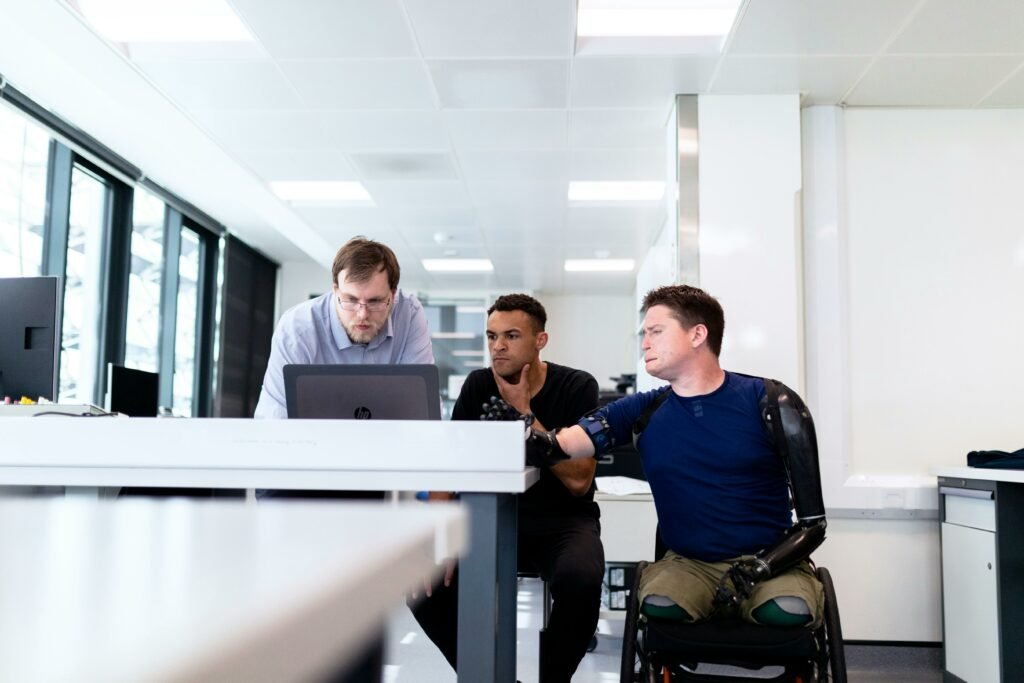

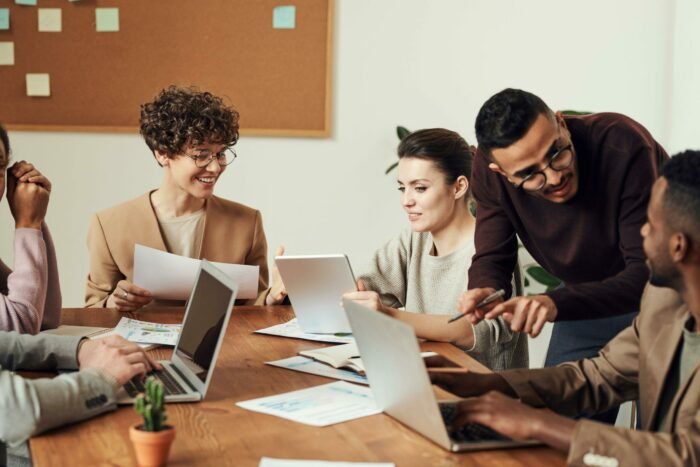
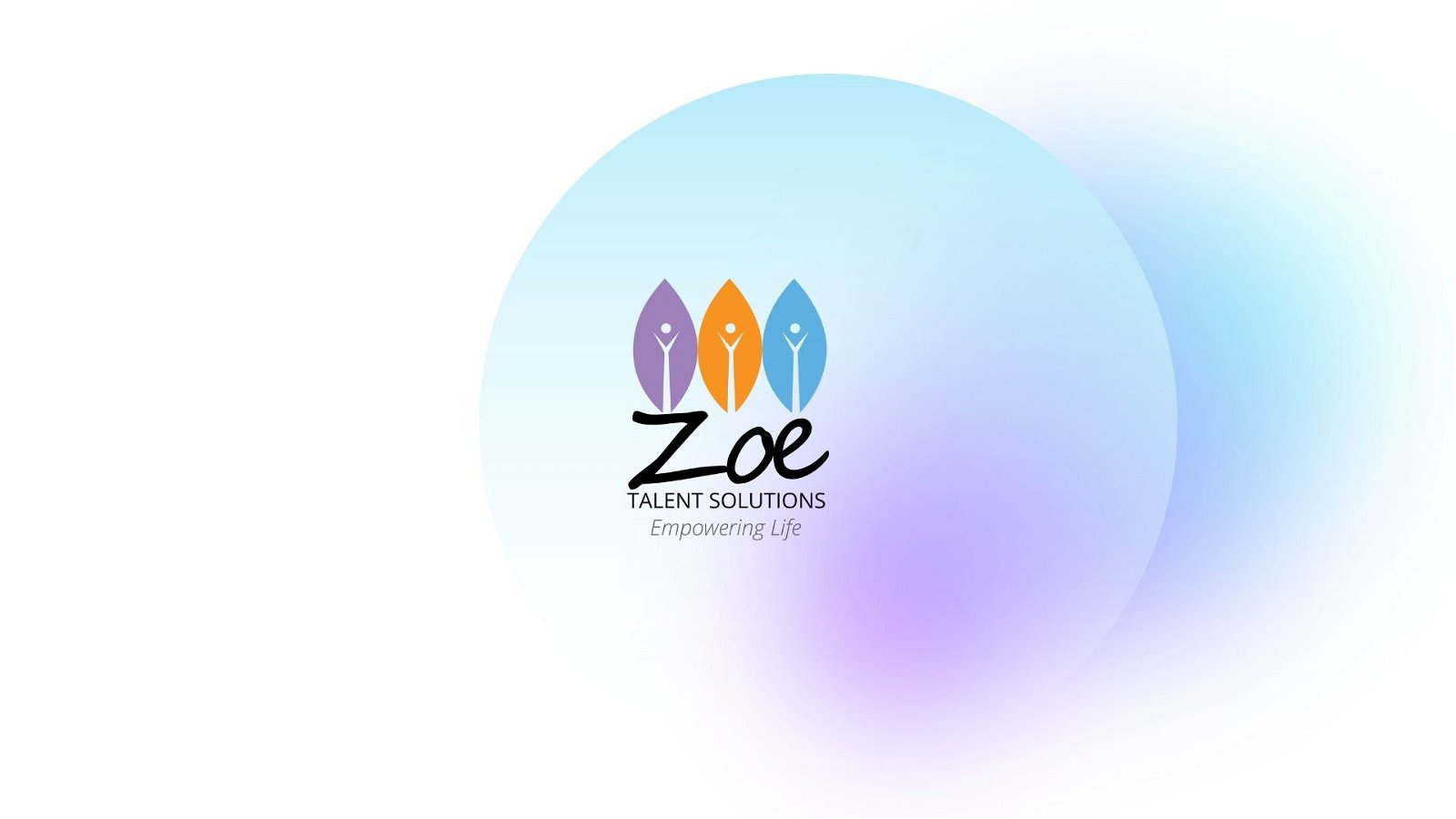

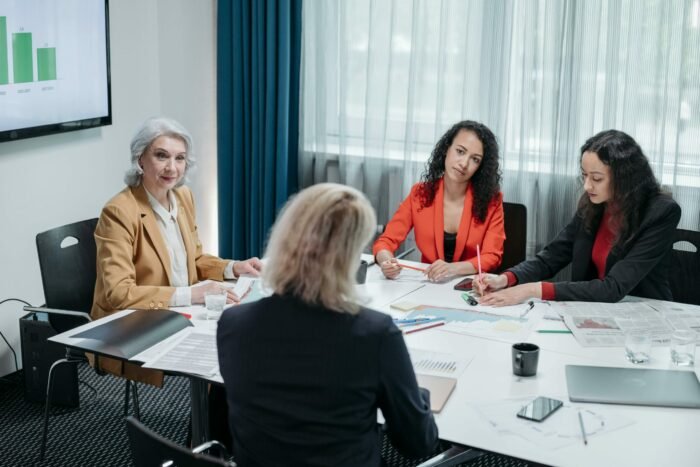
![Organizational Culture Mapping Essentials [Best 4] 8 pexels alena darmel 7710141 scaled e1705648449101](https://zoets.b-cdn.net/wp-content/uploads/2024/01/pexels-alena-darmel-7710141-scaled-e1705648449101.jpg)


![Building Trust Through Vulnerability [7 Ways] 11 Building Trust Through Vulnerability](https://zoets.b-cdn.net/wp-content/uploads/2024/01/pexels-fauxels-3183197-scaled-e1705568658945.jpg)
